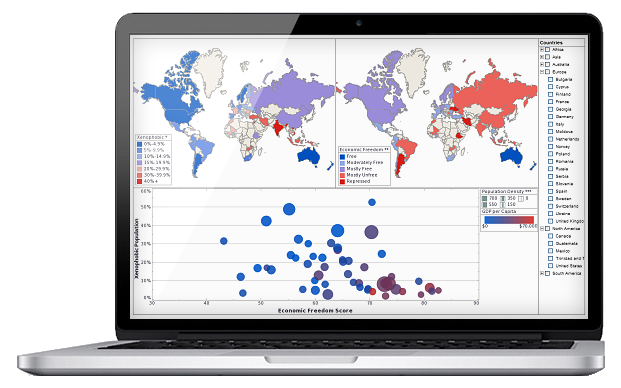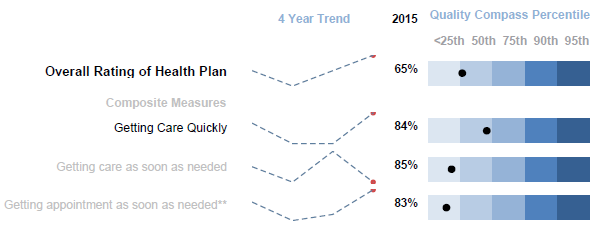InetSoft's Agile Business Intelligence
How is InetSoft's business intelligence software agile? The direct data access models built with InetSoft's patent-pending Data Block technology, as well as the dashboards and reports are all self-service enabled. This accommodates both formal and experimental changes to a level that is unique in the BI space.
Maximum Self-service
- Ad hoc reporting tools use a drag-and-drop interface based on simplified data models you choose.
- Visualization techniques of highly interactive dashboards encourage and facilitate data exploration through multi-dimensional charting styles and point and click filtering and sorting
- End-user defined data mashup enables business users or analysts to combine data from disparate sources, including imported spreadsheets, without the need for formal data models being pre-defined, and share the mashup in the BI environment.
Flexible Adaptation
- Changing data structures are automatically recognized.
- No ETL process is necessary to aggregate operational data.
- If using ETL, the application facilitates quick and easy experimentation with new dashboards or reports using new data models which can later be codified in ETL processes when ready.
Data Mashup
- New data sources can be added rapidly and combined with disparate data source types..
- End-user defined data mashup is possible, a capability that is unique to InetSoft's solution.
What BI Metrics Does the Warden of a Corrections Facility Track?
The warden of a corrections facility, also known as a prison or jail, oversees the daily operations and management of the facility, ensuring safety, security, and compliance with regulations. Business intelligence (BI) metrics play a crucial role in helping wardens make informed decisions, optimize resource allocation, and improve the overall efficiency and effectiveness of the corrections facility. Here are some common BI metrics that a warden may track:
-
Inmate Population: Tracking the total number of inmates housed in the facility provides essential insights into capacity management, resource allocation, and staffing requirements. This metric includes both sentenced inmates and pretrial detainees.
-
Population Demographics: Analyzing the demographics of the inmate population, including age, gender, race/ethnicity, and offense type, helps wardens understand the composition of the inmate population and tailor programs and services to meet their diverse needs.
-
Occupancy Rate: The occupancy rate measures the percentage of available bed space that is currently occupied by inmates. Monitoring occupancy rates helps wardens optimize facility utilization, avoid overcrowding, and plan for expansion or renovation if necessary.
-
Admissions and Releases: Tracking the number of admissions (new arrivals) and releases (discharges, transfers, or releases on parole) on a daily, weekly, or monthly basis helps wardens manage intake processes, identify trends, and forecast future population changes.
-
Average Length of Stay: Calculating the average length of stay for inmates provides insights into case processing times, court backlog, and the effectiveness of rehabilitation and reentry programs. Wardens can use this metric to identify opportunities to expedite case processing and reduce overcrowding.
-
Inmate Movement: Monitoring inmate movement within the facility, including transfers between units or facilities, disciplinary segregation, and medical confinement, helps wardens ensure safety, security, and compliance with regulations.
-
Staffing Levels and Deployment: Tracking staffing levels, including correctional officers, administrative staff, and support personnel, enables wardens to ensure adequate staffing coverage, manage overtime costs, and optimize staff deployment based on inmate population dynamics and security needs.
-
Incident Reports: Recording and analyzing incident reports, including inmate fights, assaults on staff, contraband seizures, and medical emergencies, helps wardens identify security risks, implement preventive measures, and address underlying issues contributing to safety and security concerns.
-
Compliance Metrics: Monitoring compliance with regulatory requirements, accreditation standards, and internal policies and procedures helps wardens ensure that the facility operates in accordance with legal and ethical standards. This includes compliance with health and safety regulations, sanitation standards, and human rights principles.
-
Recidivism Rates: Tracking recidivism rates, or the percentage of released inmates who reoffend and return to custody within a specified period, helps wardens assess the effectiveness of rehabilitation and reentry programs and identify opportunities to reduce recidivism through education, vocational training, and community support services.
| Previous: InetSoft's Easy Business Intelligence |



